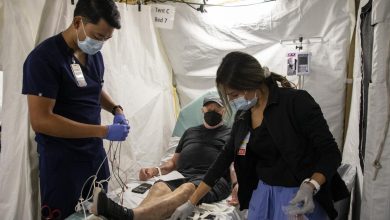No More Doctor Visits? The Future of DIY Flu Vaccination

Introduction: A Revolutionary Shift in Healthcare
Imagine a world where protecting yourself from the seasonal flu no longer requires making an appointment, sitting in a crowded clinic, or rolling up your sleeve in a doctor’s office. Instead, you walk to your medicine cabinet, pull out a small, painless patch or nasal spray, and vaccinate yourself within seconds. This vision of do-it-yourself (DIY) flu vaccination is no longer just science fiction—it is an emerging reality at the intersection of biotechnology, digital health, and public health innovation.
Seasonal influenza affects millions of people worldwide every year, resulting in hospitalizations, lost productivity, and in severe cases, death. Despite the availability of flu vaccines for decades, uptake remains inconsistent. Barriers such as fear of needles, inconvenience of appointments, and lack of access in remote regions hinder widespread immunization. But with groundbreaking research in microneedle patches, smart delivery devices, and self-administered vaccines, the future might look radically different.
The big question is: Could the traditional doctor visit become obsolete when it comes to flu vaccination?
The Current State of Flu Vaccination
Before we dive into futuristic solutions, it’s essential to understand where we stand today.
Annual Burden of the Flu
According to the World Health Organization (WHO), seasonal flu epidemics cause 3–5 million cases of severe illness and up to 650,000 deaths globally each year. In the United States alone, the Centers for Disease Control and Prevention (CDC) estimates that influenza has led to 9–41 million illnesses annually over the past decade.
Traditional Vaccination System
The standard model of flu vaccination requires:
- Manufacturing vaccines months in advance.
- Distribution to hospitals, clinics, and pharmacies.
- Administration by trained healthcare professionals.
While this system is effective, it has notable limitations:
- Accessibility – Not everyone lives near a healthcare provider.
- Time and cost – Doctor visits can be expensive and inconvenient.
- Fear of needles – A surprisingly large percentage of people avoid vaccines due to needle phobia.
- Uptake delays – By the time people get vaccinated, flu season may already be underway.
The Rise of DIY Vaccination: A Global Trend
Healthcare is becoming increasingly patient-centered. From at-home diagnostic kits to telemedicine, the demand for convenience and autonomy is transforming the medical landscape. Flu vaccination may be next.
Why DIY Vaccination Makes Sense
- Convenience – No appointments, no waiting rooms, no travel.
- Scalability – Rapid, wide-scale distribution during flu outbreaks.
- Equity – Better access for people in rural or underserved regions.
- Pandemic Preparedness – Lessons from COVID-19 highlight the need for fast, decentralized solutions.
Innovations Driving DIY Flu Vaccination
The dream of no more doctor visits hinges on new technologies that make self-vaccination safe, effective, and easy to use. Let’s explore some of the most promising developments.
1. Microneedle Patches
Microneedle patches are perhaps the most revolutionary innovation in vaccine delivery. These patches contain dozens of microscopic needles coated with vaccine material. When applied to the skin:
- The microneedles painlessly penetrate the surface.
- They dissolve within minutes, releasing the vaccine.
- No sharps disposal, no trained administrator needed.
Advantages:
- Painless and needle-free.
- Easy for anyone to apply at home.
- Stable at room temperature (no need for cold-chain storage).
- Potential for mass mailing distribution.
Clinical trials have already demonstrated that microneedle flu vaccine patches produce immune responses equal to or stronger than traditional injections.
2. Nasal Spray Vaccines
Nasal spray flu vaccines, such as FluMist, are already approved in several countries. While currently administered under supervision, advancements in packaging and instructions could make them fully DIY. Nasal sprays are:
- Non-invasive.
- Easy for children and needle-phobic patients.
- Capable of stimulating strong local immune responses in the respiratory tract.
3. Smart Syringes and Auto-Injectors
Auto-injectors, similar to EpiPens, could deliver pre-measured flu vaccines safely at home. Future versions may include:
- Voice-guided instructions for first-time users.
- Digital tracking to confirm administration.
- Bluetooth connectivity to update medical records automatically.
4. mRNA Vaccine Technology
The success of mRNA COVID-19 vaccines has opened doors for flu vaccines as well. mRNA vaccines can be rapidly developed and adapted to new flu strains, making them ideal for at-home kits. Researchers are investigating whether mRNA formulations can be packaged for DIY-friendly delivery.
5. 3D Printing and On-Demand Vaccines
Although still futuristic, 3D bioprinting could one day allow local pharmacies—or even homes—to “print” vaccines tailored to current flu strains. This would decentralize manufacturing entirely.
Potential Benefits of DIY Flu Vaccination
If widely adopted, self-administered flu vaccines could bring enormous benefits:
- Higher Vaccination Rates
Eliminating the need for appointments could drastically increase uptake, especially among younger, busy populations.
- Reduced Healthcare System Burden
Fewer clinic visits for routine vaccinations free up medical staff and resources for urgent care. - Faster Pandemic Response
During outbreaks, DIY kits could be mailed directly to households, accelerating herd immunity. - Global Health Equity
With room-temperature stable formulations, vaccines could reach low-resource areas lacking healthcare infrastructure. - Cost Savings
Cutting out administration fees and doctor visits may reduce overall healthcare costs.
The Challenges and Risks
Of course, such a dramatic shift in vaccination comes with challenges that must be addressed before DIY flu vaccines become mainstream.
1. Safety Concerns
- Will people administer them correctly?
- Could improper use reduce effectiveness or cause harm?
2. Storage and Distribution
- Some vaccines still require refrigeration.
- Ensuring stability during shipping remains critical.
3. Regulatory Hurdles
- Governments and health agencies will need new frameworks for approving at-home vaccines.
- Liability issues may arise if mistakes happen.
4. Data Tracking
- Public health relies on vaccination records to track coverage.
- DIY systems will need digital reporting mechanisms to avoid gaps.
5. Public Trust
- Skeptics already question traditional vaccines.
- Self-administration may raise concerns about counterfeit products or improper storage.
Learning from COVID-19: A Blueprint for DIY Flu Vaccines
The COVID-19 pandemic accelerated many healthcare trends that could support DIY flu vaccination:
- At-home COVID-19 test kits normalized self-administration of medical tools.
- mRNA vaccine distribution proved rapid innovation is possible.
- Telehealth adoption showed that patients can manage care outside clinics.
This global experience suggests that the public may be more prepared than ever to embrace DIY vaccines—provided they are safe, accessible, and affordable.
Ethical and Social Implications
The rise of DIY vaccination is not just a technical issue; it carries ethical and societal implications.
- Equity vs. Inequality
DIY vaccines could reduce disparities, but if priced too high, they may worsen inequities. - Autonomy vs. Responsibility
Greater autonomy means individuals take on more responsibility for their health decisions. - Surveillance vs. Privacy
Digital reporting of DIY vaccinations must balance public health tracking with privacy rights.
What Experts Are Saying
- Dr. Rachelle Walensky, former CDC Director: “Innovations like microneedle patches could be game-changers in vaccine accessibility.”
- WHO Experts emphasize that while DIY methods are promising, strong regulatory oversight is essential.
- Biotech Leaders argue that decentralization is inevitable: healthcare is moving from hospital-centric to home-centric.
A Glimpse Into the Future
Let’s fast forward 10–15 years. Here’s what flu vaccination could look like in everyday life:
- Fall 2035: A reminder pops up on your phone that flu season is approaching.
- You order a microneedle patch from your pharmacy app.
- Within days, it arrives in your mailbox.
- You apply it to your arm like a Band-Aid. No pain, no fuss.
- The patch dissolves, and your phone confirms the vaccine is activated.
- Your digital health record updates automatically.
- You head into flu season protected—without ever stepping into a doctor’s office.
This scenario could transform not only flu vaccination but the way we approach preventive healthcare altogether.
Conclusion:
The End of the Doctor’s Office for Flu Shots?
The phrase “No More Doctor Visits?” may sound radical, but it captures the transformative potential of DIY flu vaccination. With advances in microneedle patches, nasal sprays, mRNA formulations, and smart delivery devices, the possibility of self-administered vaccines is closer than ever. While challenges remain—safety, regulation, public trust—the momentum is undeniable.
The future of flu vaccination may not completely eliminate doctors from the process, but it will almost certainly make healthcare more accessible, patient-driven, and efficient. What was once a yearly chore could soon become as simple as applying a patch at home.
As the world faces recurring flu seasons and potential pandemics, one thing is clear: the future of vaccination is not confined to the walls of a clinic. It may very well start at home—with you.




